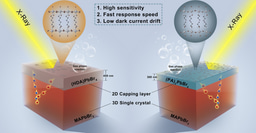Racism Gets Under the Skin: Social Disparities in Children’s Mental Health and Epigenetic-Clock-Measured Biological Aging
Published in Social Sciences, Cell & Molecular Biology, and Behavioural Sciences & Psychology
Our journey to understand the roots of health disparities began with a fundamental observation: Despite advances in medicine and a growing awareness of social inequities, stark differences in health outcomes persist along racial strata.
In the Biosocial research group at the Max Planck Institute for Human Development in Berlin, our research team—together with colleagues in the U.S.—set out to investigate the interconnected pathways through which racial health disparities take root from early childhood through adolescence.
We report these findings in a study titled “Linked emergence of racial disparities in mental health and epigenetic biological aging across childhood and adolescence” in Molecular Psychiatry.
Why focus on the early years and biological aging?
Experiences during childhood and adolescence may lay the foundation for lifelong health. Exposure to early life adversity, such as the chronic stress caused by racism, can profoundly affect developing minds and bodies. But how does a social force like racism become embodied?
This is where the concept of biological aging comes in. Biological aging refers to the gradual decline of our body’s systems over time. While we all age at the same rate chronologically (by the passage of time), our bodies can age at different rates biologically. Recent scientific advances allow us to measure biological age by looking at modifications on our DNA, specifically in DNA methylation. These molecular changes can be tracked using tools known as “epigenetic clocks” or “epigenetic speedometers”, which provide insight into how quickly someone is aging on a biological level even before symptoms of age-related disease may be apparent. For example, to look at biological aging in children.
The Data: Following Thousands of Young Lives
We analyzed data from the Future of Families and Child Wellbeing Study (FFCWS), which follows nearly 5,000 children born in U.S. cities between 1998 and 2000. This rich dataset allowed us to track changes in mental health and biological aging from childhood into adolescence. Importantly, over 2,000 of these young people provided saliva samples at ages 9 and 15 years, allowing us to look at their epigenetic-clock-measured biological age across adolescence.
Our analysis focused on three key measures of structural racism:
- Self-identified race and ethnicity – because race is a social construct that shapes access to resources and opportunities.
- Neighborhood racial segregation - using the Theil Index to quantify the extent to which neighborhoods were racially segregated – a legacy of discriminatory housing policies.
- Skin tone – a proxy measure for colorism, where darker-skinned individuals experience more or specific forms of discrimination.
We measured children’s mental health through:
- Parent reports of internalizing behaviors (like anxiety and sadness) and externalizing behaviors (like aggression) at multiple time points, from age 3 years onwards.
- Self-reported anxiety and depression at age 15.
We used three cutting-edge epigenetic clock measures of biological aging:
- DunedinPACE,
- GrimAge Acceleration
- PhenoAge Acceleration
What We Found: Racism Impacts Young Bodies and Minds
Our findings reveal that racial disparities in mental and physical health begin early in life, with mental health challenges and accelerated biological aging emerging across childhood and adolescence.
- Mental health gaps appear early: Black, Latinx, and Multiracial children showed higher levels of internalizing (like anxiety and sadness) and externalizing (like aggression) behaviors compared to their White peers. These disparities emerged in early childhood and evolved differently depending on race and gender—especially during adolescence.
- Marginalized youth age faster: Black children, those living in racially segregated neighborhoods, and those with darker skin tones showed signs of faster biological aging by age 9. Their biological aging continued to accelerate more rapidly between from ages 9 to 15 years.
- Mental health and biological aging are connected: Increases in mental health symptoms over time were linked to faster biological aging. This means that psychological distress and biological aging may reinforce each other in a feedback loop. Or that shared factors – like psychosocial stress –affect both at the same time.
Socioeconomic inequality explained some—but not all—disparities: Racism leads to stark disparities in children’s socioeconomic circumstances. Black and Latinx children are substantially more likely to live in neighborhoods and families that have less economic and educational resources. Accordingly, socioeconomic inequality explained a substantial proportion of racial disparities in mental health and biological aging. But, it didn’t fully account for the differences. This means that racism gets under the skin even when income or education levels are similar.
Challenges and Successes: Behind the Scenes
Navigating Challenges
Doing this kind of research isn’t easy. Measuring structural racism is complicated—we relied on available data like neighborhood segregation and skin tone, which don’t fully capture the lived realities of structural discrimination and daily microaggression. Future research should include more nuanced measures of lived experiences.
Despite these limitations, linking rich longitudinal social data with cutting-edge biological markers allowed us to explore these dynamics in ways cross-sectional studies cannot. Our interdisciplinary, international team—combining expertise in sociology, psychology, and molecular biology—was essential to navigating this complexity.
Why This Matters: This Isn’t Just a Scientific Finding. It’s a Call to Action.
At its core, our research adds to a growing body of evidence that racism is a social determinant of health—and one that becomes biologically embodied at a young age. The biological consequences of racism are not just something we see in adult mortality statistics—they start in childhood; social inequality accumulates and manifests over time.
This work points to clear priorities for the future:
- Develop better tools to measure racism and aging in diverse populations.
- Center lived experience: Collect data that captures racism not just as policy or place, but as everyday stress, exclusion, and vigilance.
- Understand the biology of how social inequality gets under the skin.
- Intervene early: Address the social and biological impacts of racism in childhood—before disparities become entrenched.
- Think intersectionally: Recognize that racism doesn’t act alone; it intersects with gender, class, and other systems of power.
Relevant Topics: Racial Disparities, Mental Health, Biological Aging, Epigenetics, Structural Racism, Child Development, Adolescence, Social Determinants of Health.
Follow the Topic
-
Molecular Psychiatry

This journal publishes work aimed at elucidating biological mechanisms underlying psychiatric disorders and their treatment, with emphasis on studies at the interface of pre-clinical and clinical research.






Please sign in or register for FREE
If you are a registered user on Research Communities by Springer Nature, please sign in